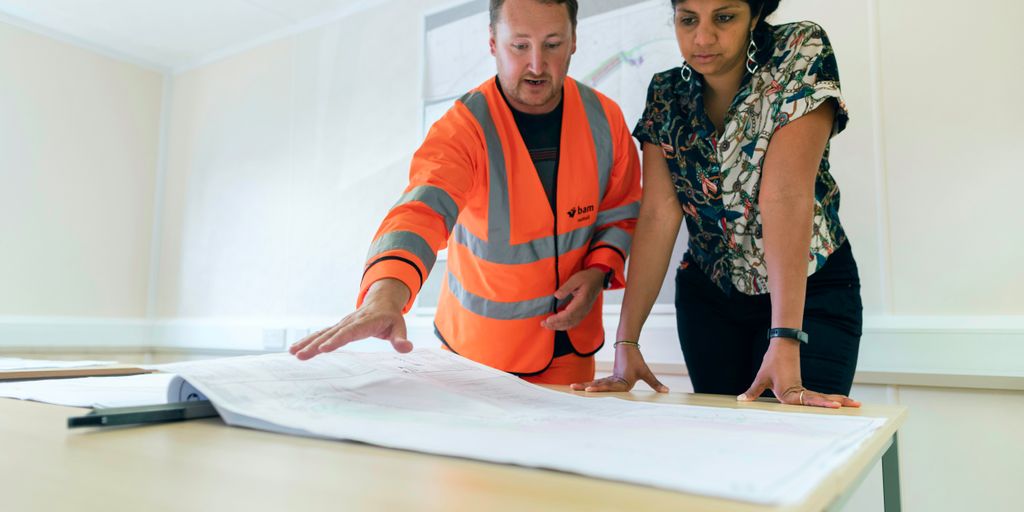In today's fast-paced world, insurance assessments are evolving thanks to technology. One major innovation is the combination of 360 tours with floor plans for insurance purposes. This approach not only simplifies the documentation process but also enhances communication between all parties involved. By providing a detailed visual representation of properties, insurers and homeowners can navigate the complexities of claims more efficiently. Let's explore how these tools are transforming the insurance landscape.
Key Takeaways
- 360 tours provide a comprehensive view of property damage, making it easier for insurers to assess claims.
- Integrating floor plans with 360 tours enhances the understanding of property layouts and damage areas.
- Using virtual tours speeds up the claims process by reducing the need for on-site visits.
- Collaboration among stakeholders improves transparency and trust during the claims process.
- Advanced scanning technology captures precise details, ensuring accurate damage documentation.
Transforming Insurance Assessments With 360 Tours
Understanding 360 Tours
360 tours are changing how insurance companies handle claims. Instead of relying solely on photos and written descriptions, insurers can now use interactive virtual tours to assess property damage. These tours provide a complete view of a property, allowing adjusters to see every angle and detail from their desks. This technology is not just a gimmick; it's a practical tool that can save time and money while improving accuracy. It's like being there without actually being there, which is a huge advantage, especially when dealing with hazardous or remote locations. interactive 360° tour can be a game changer.
Benefits of Virtual Tours for Insurance
Virtual tours bring a lot to the table for insurance. Here's a quick rundown:
- Reduced Costs: Fewer site visits mean lower travel expenses.
- Faster Assessments: Claims can be processed more quickly, leading to faster settlements.
- Improved Accuracy: 360-degree views minimize the risk of overlooking important details.
- Enhanced Customer Satisfaction: Policyholders appreciate the speed and transparency of virtual assessments.
Using virtual tours can really streamline the whole claims process. It's about making things easier for everyone involved, from the adjuster to the homeowner. It's a win-win situation.
How 360 Tours Enhance Documentation
360 tours provide a more complete and reliable record of property conditions. Traditional photos can be selective, but a virtual tour captures everything. This is especially important when documenting damage for insurance claims. The detailed visual record can help prevent disputes and ensure fair settlements. Plus, the tours can be easily shared with all parties involved, promoting transparency and collaboration. It's about having a clear, objective view of the situation, which is essential for accurate and efficient claims processing. This helps with insurance claims.
The Role of Floor Plans in Insurance Evaluations
Importance of Accurate Floor Plans
Floor plans are super important in insurance evaluations because they give a clear, visual representation of a property's layout. Accuracy is key here. An incorrect floor plan can lead to miscalculations of square footage, which then affects replacement cost estimates and risk assessments. Think about it: if you're off on the size of a room, you're off on how much it costs to fix it.
- Provide a visual reference for all parties involved.
- Help in calculating accurate square footage.
- Assist in identifying potential hazards or risks.
Integrating Floor Plans with 360 Tours
When you put floor plans together with 360° experiences, you get a really powerful tool for insurance assessments. The floor plan acts like a map, showing you where each 360-degree view was taken. This integration makes it easier to navigate the virtual tour and understand the spatial relationships between different parts of the property. It's like having a guided tour where you can see the whole picture and zoom in on the details. This is especially useful when assessing damage, as it allows adjusters to quickly locate and evaluate affected areas within the context of the entire property.
Floor Plans as a Communication Tool
Floor plans are great for talking to people about the property. They give everyone a common reference point, so there's less confusion.
Imagine trying to describe the layout of a house over the phone. It's tough! But with a floor plan, you can easily point out specific areas and discuss them in detail. This is especially helpful when dealing with homeowners who might not be familiar with insurance jargon or construction terms. A floor plan helps bridge that gap and makes sure everyone is on the same page.
Here's how floor plans help communication:
- They provide a clear, visual representation of the property layout.
- They facilitate discussions about specific areas of concern.
- They help in explaining damage assessments to homeowners.
Streamlining Claims Processing Through Technology
Reducing Time in Claims Approval
Technology is really changing how fast insurance claims get approved. It used to take forever, with paperwork going back and forth, but now, things are moving much quicker. Virtual tours and detailed floor plans let adjusters see everything they need to without even visiting the property. This cuts down on travel time and lets them process claims faster. Plus, with all the information in a digital format, it's easier to share and review, which speeds things up even more. For example, using a Floor Plan Scanner can significantly reduce the time it takes to create accurate floor plans, which are essential for claims processing.
Enhancing Accuracy in Damage Assessment
One of the biggest problems with insurance claims is figuring out exactly how much damage there is. People can disagree, and it's hard to get a clear picture just from written reports or a few photos. But with 360 tours and floor plans, it's way easier to see the full extent of the damage. This means fewer mistakes and more accurate assessments. It also helps prevent fraud, because it's harder to exaggerate the damage when there's a detailed visual record.
Facilitating Faster Settlements
When claims are processed faster and more accurately, settlements can happen much sooner. Nobody likes waiting around for their insurance money, especially after something bad has happened. Technology helps speed up the whole process, from the initial assessment to the final payment. This not only makes customers happier but also saves the insurance company money in the long run. Plus, with clear documentation, there are fewer disputes, which means fewer legal battles and quicker resolutions.
Using tech like virtual tours and detailed floor plans isn't just about being fancy; it's about making the whole claims process smoother and fairer for everyone involved. It cuts down on delays, reduces errors, and helps people get their lives back on track faster after a loss.
Collaboration Among Stakeholders in Insurance Claims
Sharing Virtual Tours with Multiple Parties
Virtual tours are not just for adjusters; they're for everyone involved. Think about it: homeowners, contractors, specialists—all can benefit from having the same visual information. Sharing these tours creates a common ground, reducing misunderstandings and speeding up the whole process. It's like everyone's looking at the same set of photos, but way more detailed and interactive. Using a platform like CloudPano makes this sharing process simple.
Promoting Transparency in Assessments
Transparency is key to a smooth claims process. When everyone has access to the same visual evidence, it's easier to build trust and avoid disputes. Virtual tours show exactly what's going on, leaving less room for interpretation or disagreement. This is especially helpful when dealing with complex damage or multiple parties involved. It's about making sure everyone is on the same page, seeing the same things, and understanding the situation clearly.
Building Trust Through Collaborative Tools
Trust is the foundation of any good relationship, and that includes the one between homeowners and insurers. Collaborative tools, like virtual tours, help build that trust by providing a clear and honest view of the situation. When homeowners feel like they're being kept in the loop and that their concerns are being taken seriously, they're more likely to be satisfied with the outcome. It's about showing them, not just telling them, what's happening with their claim.
Using virtual tours in insurance claims isn't just about technology; it's about people. It's about making sure everyone involved feels informed, respected, and confident in the process. By promoting transparency and collaboration, we can create a better experience for everyone involved.
Advanced Scanning Technology for Detailed Evaluations
Advanced scanning tech is changing how insurance companies handle claims. It's not just about taking pictures anymore; it's about creating detailed, measurable records of properties. This means more accurate assessments and faster resolutions for everyone involved. I remember when my uncle had a house fire, the adjusters were there for days measuring and taking notes. Now, with this tech, it could be done much faster and with less disruption.
Precision in Damage Documentation
The ability to create a digital twin of a property is a game-changer. Instead of relying on handwritten notes and photos, insurers can use 3D scans to document every detail of the damage. This tech captures high-resolution imagery and creates accurate virtual representations of properties. It's like having a virtual copy of the property before and after the damage, allowing for thorough analysis and comparison. This is especially useful in cases where the damage is extensive or difficult to access.
Extracting Measurements from 3D Models
One of the coolest things about these 3D models is that you can pull measurements directly from them. No more tape measures or guesswork! Assessors can measure distances, areas, and volumes with just a few clicks. This not only saves time but also reduces the risk of human error. Plus, it makes it easier to estimate repair costs and plan restoration work. The Floor Plan Scanner App is a great example of this in action.
Capturing Nuances in Property Conditions
It's the little things that often get missed in traditional assessments. A small crack in the foundation, water stains behind wallpaper, or subtle smoke damage. Advanced scanning tech can capture these nuances, providing a more complete picture of the property's condition. This level of detail can be crucial in determining the extent of the damage and the appropriate course of action.
This technology fosters a collaborative ecosystem. Virtual tours can be shared with multiple parties, from structural engineers to restoration experts, can virtually step into the property and provide their expertise without physical presence. This not only expedites the assessment process but also ensures that the evaluations are thorough and encompass all necessary expertise for a fair and precise resolution.
Here's a simple comparison of traditional vs. advanced scanning:
Enhancing Communication Between Homeowners and Insurers
Insurance claims can be stressful for homeowners, and clear communication is key to easing that stress. Using visual tools like 360 tours and floor plans can really change how homeowners and insurers interact, making the whole process smoother and more transparent. It's about bridging the gap and making sure everyone is on the same page.
Bridging Gaps with Visual Documentation
Visual documentation, such as virtual tour software, helps bridge communication gaps. Instead of relying solely on written descriptions or phone calls, homeowners can share a virtual tour of their property. This allows insurers to see the actual conditions, understand the damage, and assess the situation more accurately. It's like showing them exactly what happened, without them needing to be there in person.
Facilitating Clear Discussions
Having a visual reference point makes discussions much clearer. When homeowners and insurers can both see the same virtual tour or floor plan, it's easier to talk about specific areas of concern. There's less room for misunderstanding, and everyone can focus on finding solutions. This is especially helpful when dealing with complex damage or hard-to-describe issues.
Improving Client Satisfaction
When homeowners feel understood and informed, their satisfaction with the insurance process goes up. Visual tools help build trust and confidence. They show that the insurer is taking the claim seriously and is committed to finding a fair resolution. This can lead to happier clients and a better overall experience.
Here's a simple breakdown of how visual tools can improve client satisfaction:
- Faster claim processing
- Reduced disputes
- Increased transparency
The Future of Insurance Assessments with Virtual Reality

Innovations in Property Damage Assessment
The future of insurance assessments is looking pretty wild with the rise of virtual reality. We're talking about moving beyond just 360 tours and floor plans to fully immersive experiences. Imagine putting on a VR headset and actually walking through a damaged property, assessing everything as if you were there. This tech opens doors to more accurate and efficient claims processing. It's not just about seeing the damage; it's about experiencing it.
Adapting to New Technologies
To stay competitive, insurance companies need to get on board with these new technologies. It's not enough to just have the tools; you need to know how to use them effectively. This means training staff, updating workflows, and being open to new ways of doing things. The companies that adapt quickly will be the ones that thrive. Think about it:
- Investing in VR training programs for assessors.
- Developing VR-compatible claims processing software.
- Partnering with tech companies to stay ahead of the curve.
Setting New Standards in Insurance
VR isn't just a gimmick; it's a game-changer. It's setting new standards for accuracy, efficiency, and customer satisfaction in the insurance industry. By using VR, insurers can reduce fraud, speed up claims processing, and provide a better experience for policyholders. It's a win-win for everyone involved. Virtual Reality South Africa’s virtual tours aid in meticulously documenting property damage for insurance claims.
The shift towards VR in insurance assessments isn't just about adopting new tools; it's about fundamentally changing how we approach property damage and claims. It's about creating a more transparent, efficient, and customer-centric process that benefits everyone involved.
Virtual reality (VR) is changing how insurance assessments are done. With VR, insurance agents can look at properties in a whole new way, making it easier to spot damage and understand claims. This technology helps speed up the process and makes it more accurate. If you want to learn more about how VR can improve insurance assessments, visit our website today!
Wrapping It Up
In conclusion, using 360 tours and detailed floor plans is changing the game for insurance assessments. Homeowners can easily document damage, making the claims process smoother. For insurance adjusters, these virtual tools mean they can assess properties without stepping foot inside, which is safer and saves time. Plus, everyone involved can see the same detailed view, which helps clear up any confusion. As we move forward, it’s clear that this tech isn’t just a nice-to-have; it’s becoming a must-have for anyone in the insurance world. So, if you’re in the business of insurance or dealing with a claim, consider embracing these tools. They’re not just about keeping up; they’re about getting ahead.
Frequently Asked Questions
What are 360 tours and how do they work?
360 tours are virtual experiences that let you see a space from all angles. You can look around as if you were really there, using a computer or a smartphone.
How can 360 tours help with insurance claims?
They provide a clear visual record of property damage, making it easier for insurance companies to assess claims accurately.
What is the importance of floor plans in insurance assessments?
Floor plans show the layout of a property, helping assessors understand the space better and document damages more effectively.
How does technology speed up the claims process?
Using virtual tours and floor plans, claims can be processed faster by reducing the time needed for on-site evaluations and improving communication.
Can multiple parties access the 360 tours?
Yes, 360 tours can be shared with different stakeholders, like insurance adjusters and contractors, which helps everyone stay informed.
What is the future of insurance assessments with new technology?
The future looks bright with advancements like virtual reality and 3D scanning, which will make assessments more accurate and efficient.














.png)



.png)






.png)

.png)





